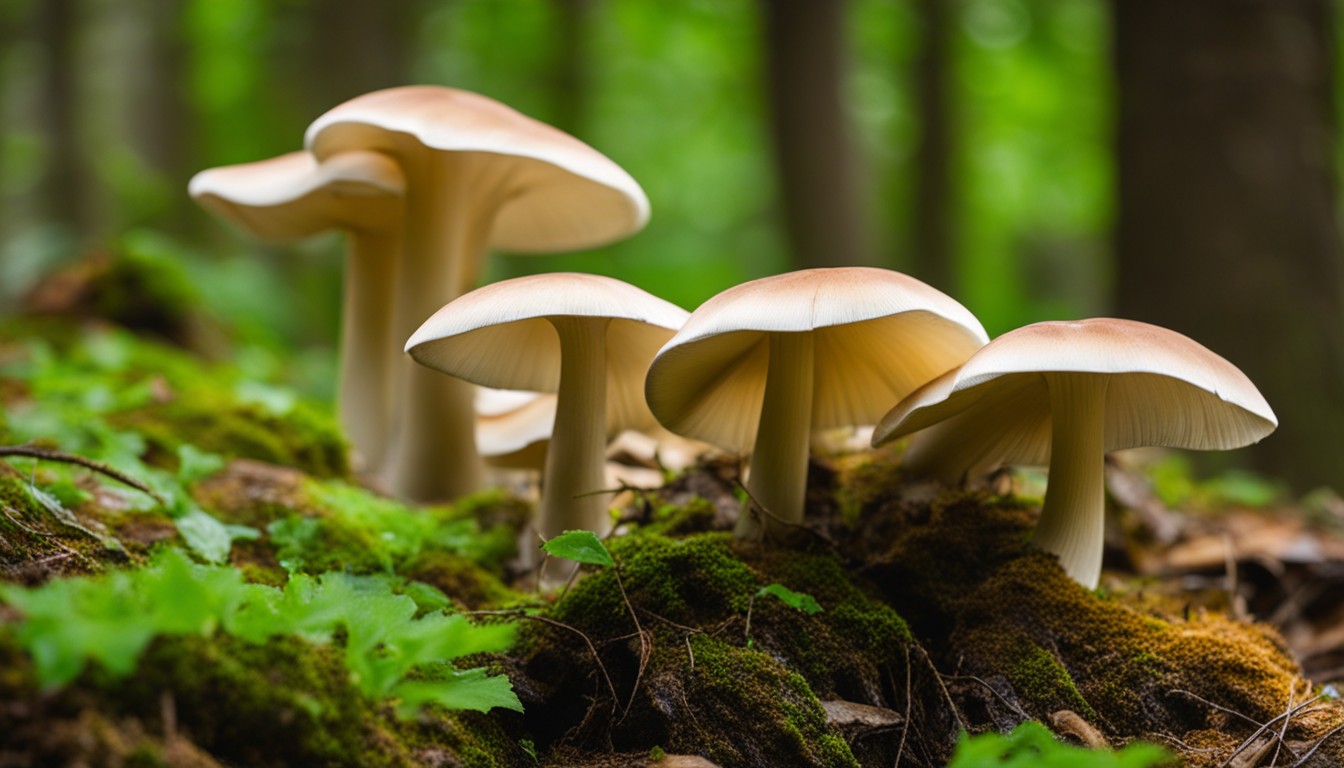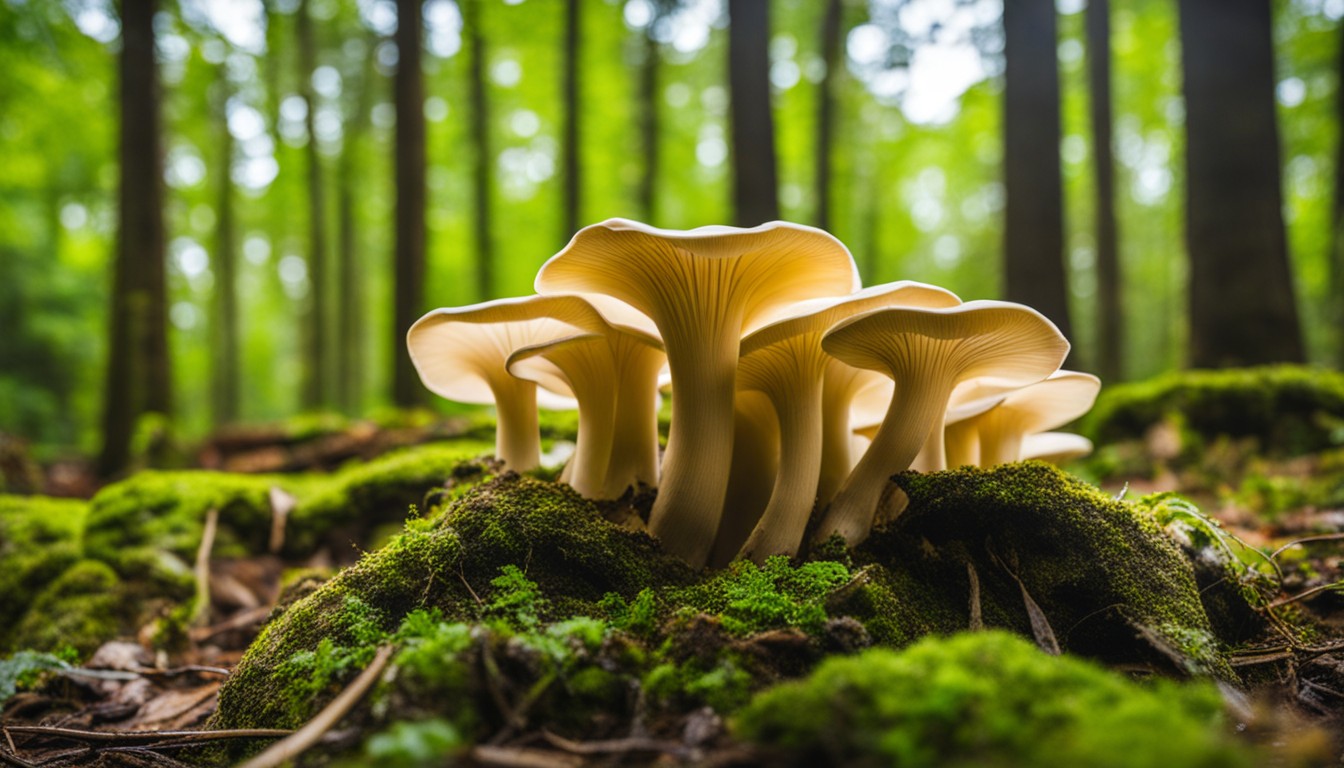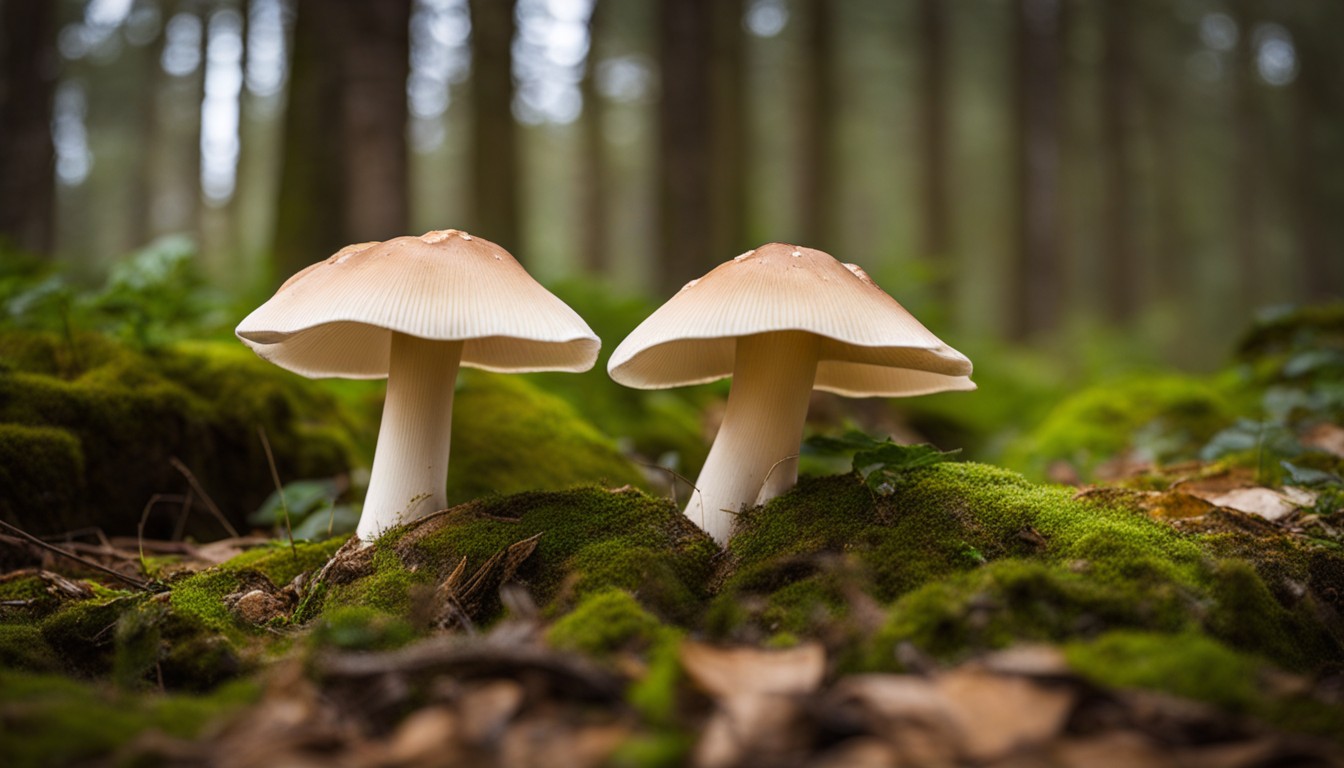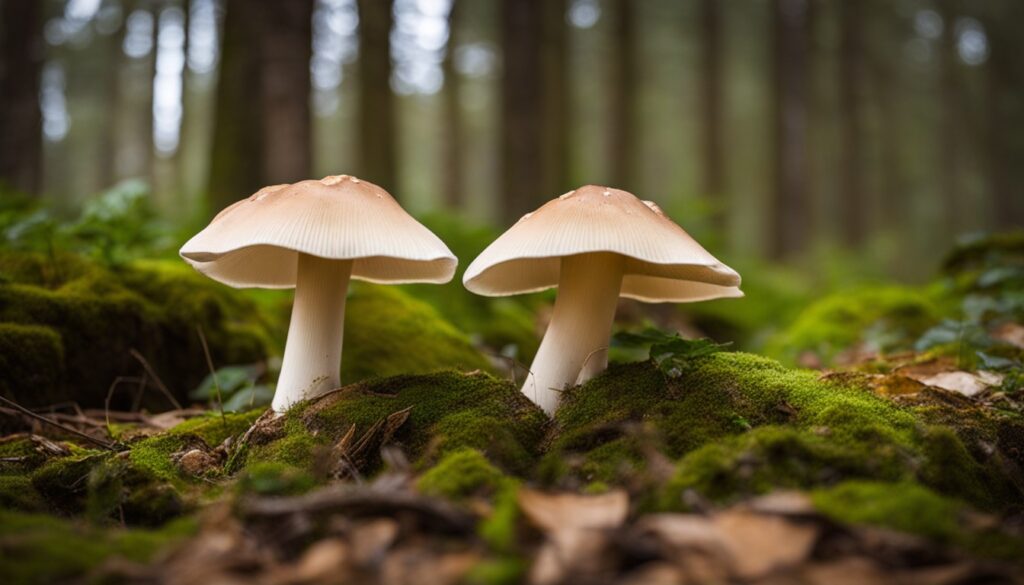From the towering forests to the hidden meadows, Southern Idaho is a haven for mushroom enthusiasts. With its diverse ecosystems and unique geology, this region offers an abundance of mushroom species waiting to be discovered. Whether you’re an avid forager or simply intrigued by the beauty and diversity of mushrooms, Southern Idaho is the perfect destination to immerse yourself in the world of mycology. Join us as we delve into the enchanting realm of mushrooms in Southern Idaho and uncover the hidden treasures that lie beneath the forest canopy.
Types of Mushrooms Found in Southern Idaho
Southern Idaho’s diverse habitat allows the flourishing of various mushroom types, including morels, porcini, chanterelles, shiitake, and oyster mushrooms. This region serves as a treasure trove for fungi enthusiasts and researchers alike due to its abundant mushroom propensity.
Southern Idaho’s rich fungal biodiversity, featuring morels, porcini, and others, plays a pivotal role in maintaining the region’s vibrant and diverse ecosystem.
Mushrooms play a significant role in Southern Idaho’s thriving ecosystem. They help break down organic material, recycle nutrients, form symbiotic relationships with trees and other plants, contributing significantly to the region’s verdant, biodiverse landscapes.
Morel Mushrooms
Rich in flavor and characterized by a unique honeycomb-like cap, Morel Mushrooms are a culinary highlight in Southern Idaho. Their earthy, meaty texture offers a distinctive taste experience that thrills the palates of locals and gastronomes alike.
Morel hunting is no less than a cherished seasonal tradition in Southern Idaho. Enthusiasts and amateur mycologists alike delight in searching for these elusive mushrooms, adding an exciting dimension to the appreciation of nature’s bounty in Southern Idaho.
Porcini Mushrooms
Southern Idaho’s Porcini mushrooms, prized for their rich, earthy flavor, embody the region’s culinary treasure. Their robust and savory nuances, paired with a hearty texture, elevate dishes to new gastronomic heights.
These jewels predominantly thrive in coniferous forests, forming a symbiotic relationship with pine trees. Singular in silhouette, they sport a brown, often bulbous cap with a whitish, spongy underside.
Their unique features include a dark, sturdy stem and a distinct, almost cacao-like aroma. It is these distinctive attributes that make the Porcini a celebrated find among Idaho’s mushroom seekers.
Chanterelle Mushrooms
Southern Idaho’s wilderness often yields a delightful discovery: the golden Chanterelle mushrooms. Flourishing in the region’s coniferous forests, these gems add a distinguishing charm to the diverse mushroom landscape.
Chanterelle mushrooms not only offer gastronomic pleasure but also carry significant health benefits. They excel in delivering a powerful nutrient punch, with rich concentrations of vitamins C and D, along with essential minerals, including potassium.
The experience of hunting these mushrooms can be a thrilling pursuit in itself. Amid the rustling leaves and towering trees, finding a patch of Chanterelles becomes a treasure hunt steeped in nature’s serenity.
In the gourmet world, Chanterelle mushrooms are highly prized. They bring a subtle peppery taste with a hint of fruitiness that transforms ordinary recipes into exquisite dishes, offering robust flavor alongside nutritional benefits.
In Southern Idaho, Chanterelle mushrooms serve as silent witnesses to the changing seasons. Their golden hues mirror the fall colors, becoming part of the land’s living canvas and offering an exciting forage for both beginners and experienced mushroom hunters.
Shiitake Mushrooms
Shiitake mushrooms, originating from East Asia, play a vital role in various cuisines due to their distinct umami flavor and meaty texture. They are popular not only in gastronomy but also in traditional medicine due to several health benefits, thus having a profound cultural significance.
The cultivation of Shiitake mushrooms is possible in Southern Idaho, leveraging its unique environmental conditions. The relatively dry climate together with cooler nighttime temperatures provides an ideal environment that mirrors their native growing conditions in the mountains of Asia.
Growing these mushrooms involves inoculating logs with Shiitake spawn, then letting nature take its course. Given the correct conditions – a mix of sun and shade, perfect moisture levels and patience – one can expect a blooming harvest. This makes Southern Idaho a potential hub for high-quality Shiitake cultivation.
Oyster Mushrooms
Oyster mushrooms, with their pleasing velvety texture and mild flavor, are a favorite among Southern Idaho cultivators. Thriving best in cooler temperatures, it is common to find them flourishing from spawn to harvest especially in the spring and fall seasons.
Oyster mushrooms from Southern Idaho adds a unique depth to a variety of dishes. The mild, slightly sweet and woodsy flavor, enlivens soups, sauces, and stir-fries, celebrating the nuanced yet robust tastes of the region.
Ideal Growing Conditions for Mushrooms in Southern Idaho

The micro-climate plays a crucial role in the growth of mushrooms. In Southern Idaho, a diverse micro-climate, ranging from dry arid regions to moist temperate areas, provides an ideal breeding ground for a myriad of mushroom types.
Geographical features shape the region’s soil composition and moisture levels, indirectly fostering the mushroom growth. Southern Idaho, strewn with mountains, forests, lakes and rivers, boasts fertile soils, frequent precipitation, optimal pH levels, and abundance of organic matter – key elements for thriving mushroom populations.
Temperature and Climate
Temperature variances in Southern Idaho influence mushroom growth cycles significantly, with ideal conditions seen during the cooler, moist periods of spring and fall. The region’s rather fluctuating conditions necessitate keen vigilance for mushroom enthusiasts.
Mushroom cultivation practices in Southern Idaho require adaptation to its unique climatic conditions. Knowledge of the area’s microclimates and their diverse weather patterns is pivotal for mushroom foragers seeking a successful harvest.
Moisture and Humidity
Mushroom cultivation in Southern Idaho heavily depends on the proper balance of moisture. It’s during the rainier days of spring and fall that you’ll find these fungi thriving.
The semi-arid climate of Southern Idaho may not seem ideal for mushroom growth. However, many species of mushrooms have adapted to lower humidity levels and can indeed flourish in these conditions.
Maintaining optimal humidity for mushroom growth in this region involves mimicking damp woodland environments. Frequent, small amounts of water are beneficial, imitating the dew that often coats the forest floor.
It’s not just about watering the soil; mushrooms can also absorb airborne water. Using a spray bottle to mist the air around the mushrooms can help ensure they achieve sufficient hydration.
Importantly, while mushrooms need humidity, overly saturated conditions can be harmful. It is a fine balance to maintain – too much moisture can cause rot, and too little can inhibit growth.
Soil Type
The soil composition of Southern Idaho significantly affects mushroom growth. Certain mushroom types favor unique minerals and nutrient-rich organic matter found in the region’s varied soil.
Understanding soil type is critical for mushroom farming in Southern Idaho. Each mushroom species thrives best under different soil conditions, thus it’s essential to find the right soil type.
For instance, morels and porcini favor sandy or loamy soils and thrive best in areas with high organic matter such as leaf litter or decaying wood. Their mycelium network, the fungal equivalent of roots, thrives in these soils.
Shiitake and oyster mushrooms, on the other hand, typically prefer more acidic soils. They thrive in areas with high levels of lignin and cellulose, typically found in decomposing hardwoods.
Likewise, chanterelles favor a slightly acidic soil, often found beneath coniferous trees. The complex soil type of Southern Idaho makes it a mushroom hunter’s paradise.
Where to Find Mushrooms in Southern Idaho
Venture to Southern Idaho’s National Forests and reserves for an abundant variety of mushrooms. These areas provide the perfect habitat for a plethora of fungi, thanks to diverse ecosystems and ideal growing conditions.
Embrace the delight of foraging for wild mushrooms in Southern Idaho’s idyllic landscapes. From state parks to private lands, with the right permissions, you’ll encounter a treasure trove of edible fungi throughout the changing seasons.
National Forests and Wilderness Areas
Experience the thrill of mushroom foraging within Southern Idaho’s untouched National Forests. This region’s diverse ecosystem and benign weather conditions create the perfect environment for a multitude of mushroom variations.
The numerous wilderness areas of Southern Idaho are indeed a paradise for mushroom hunters. Discover a myriad blend of edible fungi in these untouched spaces, each type contributing to the rich biodiversity that Idaho’s environment has to offer.
State Parks and Nature Reserves

With an abundance of mushroom varieties, Southern Idaho’s state parks are teeming with rich biodiversity. Morel, Porcini, and the sought-after Chanterelle mushrooms are just a few to mention that foragers often spot.
State parks like the Bruneau Dunes or Castle Rocks offer a serene environment where mushroom lovers can safely hunt for their choice specimens and appreciate the distinct flora of the region.
Nature reserves in Southern Idaho provide a unique snapshot into the local mushroom population. From the blissful tranquility of Deer Flat to the unruffled beauty of Camas National Refuge, these reserves offer a slew of edible mushrooms.
Visitors can familiarize themselves with the mushrooms species in the reserves through guided tours, adding a layer of safety and knowledge to the pursuit of mushroom foraging.
A note of caution, always remember private lands require permission before hunting for mushrooms. With responsible foraging, the experience in state parks and nature reserves becomes enriching and sustainable.
Private Lands with Permission
Navigating private lands in Southern Idaho for mushroom hunting can be an exciting proposition, opening up new locations teeming with diverse fungi. Respect for the property owner is paramount, hence, obtaining due permission before embarking on the foray is a must.
Property owners often appreciate an understanding of their rights and privileges. These lands often follow different regulations compared to public areas. Hence, familiarizing yourself with specific rules set by the owner ensures a smooth mushroom foraging experience.
Politeness, courtesy, and patience work in your favor to gain access for mushroom hunting. Keeping privy to legal parameters like trespass laws will safeguard you from any unnecessary disputes or misunderstandings.
Private lands can sometimes provide an abundance of certain mushroom types not found elsewhere. However, it’s important to remember that over-harvesting can negatively impact the ecosystem. Striking a balance between exploration and conservation is vital.
Offering to share a part of your find can also be a gesture much appreciated by the landowner. It illustrates respect and gratitude. Ultimately, mushroom hunting on private lands strengthens community ties and fosters a deeper connection with nature.
Seasons for Mushroom Hunting in Southern Idaho
Repository of diverse fungi, Southern Idaho blossoms with mushrooms in preferred seasons. Spring invites Morels and Porcinis, while fall, the favorite for Shiitakes and Chanterelles, brings earthy richness.
With timing being crucial in harvesting mushrooms at their peak, winter provides an abundance of Oyster mushrooms. Accurately planning and timing your foraging trips in Southern Idaho is essential to reap nature’s best yields.
Spring
As spring arrives in Southern Idaho, mushroom enthusiasts begin their ventures into the lush forests. This season is a peak time for mushroom hunting, providing a bounty of diverse types to discover.
The onset of warmer temperatures and consistent rainfall create perfect conditions for mushroom growth. Spring’s damp humus and the leafy forest floor become a haven for various fungi species.
Morel mushrooms are one of the first to make their appearance in the spring. Their distinctive honeycomb-like caps are a delight for foragers in Southern Idaho.
Other types that emerge during this season are the brightly colored Chanterelle and the robust, meaty Porcini. Their distinguishing features make them easy for foragers to identify.
The Shiitake and Oyster mushrooms, popular in gourmet dishes, can also be spotted during the spring in Southern Idaho. Foragers should make sure to follow guidelines for safe mushroom identification, ensuring a beneficial hunting excursion.
Fall
Unveiling fall’s bountiful mushroom harvest is a delightful activity in Southern Idaho, showcasing a variety of species thriving in cooler temperatures. Among these species, chanterelles and porcini become more prevalent, their earthy flavors enriching autumnal recipes.
Fall for fungi is more than just a phrase in Southern Idaho, as mushroom enthusiasts rejoice in the arrival of autumn mushroom varieties. Apart from the usual chanterelles and porcini, the unique matsutake makes a special appearance due to its preference for cooler climates.
Winter
During winter, the mushroom world in Southern Idaho takes a rest. Hidden from sight, fungal mycelium network continues its growth underneath snow-covered soils, setting the stage for spring’s bounty. Yet, for a mushroom hunter, winter is a quiet time.
While the forest sleeps under its blanket of snow, mushrooms follow a miraculous life cycle. Under the frosty surface, mycelium threads intersect, interweave, and process nutrients, nourishing the soil.
Some mushroom varieties like winter oyster (Pleurotus ostreatus) defy the odds and peek through the snowy cover, proving there are exceptions to every rule. These mycelial wonders add vibrant spots of life to the monochrome winter landscape.
This seasonal pause offers an opportunity to garner knowledge about mushroom growth and arm oneself for the next mushroom hunting session. It’s a time for studying mycological literature, understanding the roles these fungi play in the ecosystem, and learning identification techniques.
Preparation in the winter, combined with the quiet but continuous growth beneath the surface, promises a fruitful search in the upcoming warmer seasons. The mushroom life cycle, intertwined with the region’s weather patterns, is a fascinating study in adaptation and survival.
Tips for Identifying Edible Mushrooms in Southern Idaho

In Southern Idaho, the art of distinguishing edible from poisonous mushrooms hangs heavily upon mastering the identification of six key features: cap shape, gill attachment, stem characteristics, spore print color, smell, and habitat. This is an indispensable skill for any passionate mushroom hunter, ensuring a safe and enjoyable foraging experience in the beautiful landscapes of the area.
Consult a Field Guide or Expert
With an array of mushrooms native to Southern Idaho, guidance from a seasoned forager or mycologist is crucial to ensure correct identification and safeguard against hazardous species. Their sophisticated knowledge base ensures a rewarding and secure foraging experience.
Field guides serve as a critical tool for mushroom enthusiasts, offering precise information and visual illustrations for correct identification. Leveraging a reliable field guide not only broadens your understanding but significantly contributes to safe mushroom foraging in Southern Idaho.
Look for Key Features
Gaining proficiency in mushroom identification commences with decoding their morphology. In Southern Idaho, each mushroom type presents unique features, from the crest, gills, to the stalk. Understanding these nuances aids in correct identification, ensuring safety and accuracy.
Morels, a beloved species found in Southern Idaho, can be identified by their distinct honeycombed cap. On the other hand, edibles like Chanterelles exhibit a golden hue, accompanied by unforked, decurrent gills.
In the quest of unearthing Shiitake mushrooms, look for its brown cap and white gills. Concurrently, Oyster mushrooms can be spotted by its white to gray cap, and decurrent gills that trace a short distance down the shaft.
Shedding light on more intricate details, studying spore prints emphasizes minuscule characteristics that cannot be discerned through the naked eye. Spore prints, the ‘footprint’ of a mushroom’s reproductive discharge, offer additional credentials to validate the species in question.
Lastly, porcini mushrooms display a brown to reddish-brown cap and a cream-colored underside, aiding in identification. Being armed with such distinct features encourages both safe and fruitful mushroom hunting in Southern Idaho.
Pay Attention to Habitat and Growing Conditions
In the untouched lands of Southern Idaho, mushroom habitats flourish, each with their unique growing conditions. Places rich in organic matter, shaded from direct sunlight, often become ideal spots for mushrooms.
Local micro-environments significantly affect mushroom species distribution in Southern Idaho. Distinct species gravitate to different altitudes, soil types, and levels of sunlight and moisture.
A grasp of these micro-environmental nuances is key when searching for certain mushroom types. A forest’s edge might host Shaggy Manes, while a decaying log in a wet, shadowed corner could hide delicate Oyster Mushrooms.
Frequently Asked Questions About Mushrooms in Southern Idaho
Discover the fascinating world of mushrooms in Southern Idaho with these commonly asked questions.
What makes Southern Idaho a hotspot for mushrooms?
Southern Idaho boasts a rich diversity of mushrooms due to its unique growing conditions and varied ecosystems, ranging from dense forests to open meadows.
What types of mushrooms can be found in Southern Idaho?
In Southern Idaho, you can find a wide variety of mushrooms, including prized edibles like morels, chanterelles, and porcini, as well as beautiful and colorful species like the fly agaric and amanita muscaria.
When is the best time to go mushroom hunting in Southern Idaho?
The prime mushroom hunting season in Southern Idaho generally begins in late spring and continues through the summer and early fall. It’s important to familiarize yourself with specific mushroom species’ growing patterns to maximize your chances of success.
Are there any poisonous mushrooms in Southern Idaho?
Yes, there are poisonous mushrooms in Southern Idaho, and it’s crucial to exercise caution and expert knowledge in identifying edible species. Consult a local mycology expert or join a guided foray to ensure your safety and enjoyment while mushroom hunting.
Can I forage for mushrooms in Southern Idaho for personal consumption?
Yes, personal mushroom foraging is allowed in many areas of Southern Idaho, but it’s essential to obtain the necessary permits and follow any regulations set by land management agencies. Respect the environment by practicing sustainable harvesting and leaving enough mushrooms for future growth.
Are there any guided mushroom forays or workshops available in Southern Idaho?
Yes, there are guided mushroom forays and workshops available in Southern Idaho. These opportunities provide valuable knowledge and enhance your mushroom hunting experience. Check with local mycology societies or nature centers for upcoming events and educational offerings.
Are there any restrictions or regulations on mushroom foraging in Southern Idaho?
It’s essential to be aware of any specific regulations or restrictions on mushroom foraging in the areas you plan to explore. Some public lands may have limitations, permits, or seasonal closures in place. Always practice responsible foraging and respect private property rights.
Conclusion
Southern Idaho is indeed a mycologist’s paradise, thanks to its diverse range of mushrooms and optimal growing conditions, making it an exciting hub for mushroom enthusiasts. The gratifying rewards of mushroom hunting in this region go beyond merely finding an edible specimen, to appreciating the dynamic ecosystems that foster their growth.
- Different types of mushrooms like Morels, Porcinis, Chanterelles, Shiitakes, and Oyster mushrooms
- Ideal growing conditions – Temperature, Climate, Moisture, Humidity, and Soil type
- Various locations for hunting including National Forests, State Parks, and Private Land with permission
- Diverse seasons for mushroom hunting: Spring, Fall, Winter
- Useful tips for Identifying edible mushrooms such as consulting a field guide or expert, observing key features, and understanding habitat and growing conditions.

